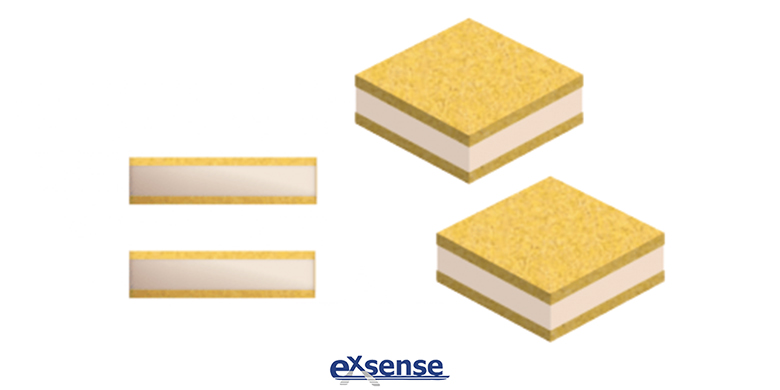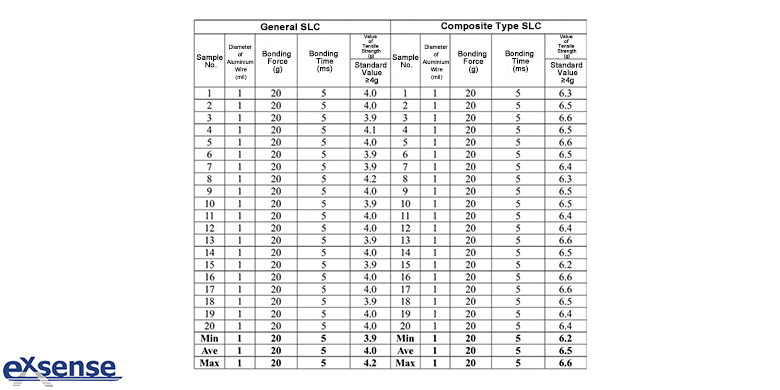
According to the Composite Electrode SLC Single Layer Capacitor, the lower surface electrode of the composite electrode SLC single layer capacitor can be well welded with solder paste reflow or silver paste, and the TiW layer makes the copper (Cu) layer bonded with the capacitor ceramic substrate better, and has the blocking effect; As a barrier layer, the copper layer is used to block the external damage to the transition layer and has welding effect; The gold (Au) layer is both the welding layer and the protection layer, which can effectively blocking the penetration of solder into the silver layer during solder reflow soldering. The welding effect of solder reflow is great, and there is no tin silver alloy phenomenon or silver migration phenomenon. Moreover,the temperature of solder paste reflow soldering is 260℃, while solder paste reflow soldering of gold layer on the lower surface electrode of composite electrode SLC single layer capacitor will not lead to silver migration phenomenon, so its temperature can reach 260℃. If use high temperature tin, the temperature can reach above 300℃. In addition, the silver surface of the upper surface electrode of the composite electrode SLC single layer capacitor can be bonded with aluminum wire, copper wire or gold wire very well. The preparation method of composite electrode SLC single layer capacitor is as follows:
First, silver paste is printed on one surface of capacitor ceramic substrate, and then sintered at high temperature.
① The powder of class Ⅰ porcelain, class Ⅱ porcelain or class Ⅲ porcelain used for capacitor ceramics is prepared by batching, ball milling, isostatic pressing, sintering and slicing according to the actual formula.
② Use 200 mesh screen to print silver paste on the surface of capacitor ceramic substrate;
③ The mesh belt sintering furnace is used for high temperature sintering. The temperature of high temperature sintering is 850℃, the sintering frequency is 25±5Hz, and the sintering holding time is 15 minutes, the thickness of the printed silver layer is 5~7 microns.
Second, sputtering titanium tungsten layer, copper layer and gold layer on another surface of capacitor ceramic substrate in sequence, including the following steps:
① First cleaning
After the capacitor ceramic substrate is treated with cleaning solution, the ultrasonic machine is used to clean it, the cleaning time is 5±1 minutes; Then drying, drying temperature is 100±5℃, drying time is 30±5 minutes.
② Secondary cleaning
The capacitor ceramic material obtained from first cleaning is put into the plasma cleaning machine for secondary cleaning, the cleaning time is 5±1 minutes, the drying temperature is 100±5℃, the drying time is 30±5 minutes, and the surface is activated.
③ Sputtering titanium tungsten layer
Vacuum sputtering machine to vacuum process first, then filling the argon as working gas, to the quality of the titanium and tungsten titanium tungsten alloy ratio of 1:9 as target material, under the effect of electric field, the Ar + bombardment target faster, atom sputtering target material to the capacitance ceramic substrate, sputtering a layer of titanium tungsten layer on the capacitance ceramic substrate without silver layer, the sputtering thickness is 0.1~0.15 micron.
④ Sputtering copper layer
Vacuum sputtering machine to vacuum process first, then filling the argon as working gas, with copper as the target, under the effect of electric field, the Ar + bombardment target faster, atom sputtering target material to the capacitance ceramic substrate, sputtering a layer of copper layer on the titanium tungsten layer, the sputtering thickness is 0.1~0.2 micron.
⑤ Sputtering gold layer
Vacuum sputtering machine to vacuum process first, then filling the argon as working gas, with gold as the target, under the effect of electric field, the Ar + bombardment target faster, atom sputtering target material to the capacitance ceramic substrate, sputtering a layer of gold layer on the copper layer, the sputtering thickness is 0.25~0.55 micron.
Third, the size of single chip capacitor is calculated according to the capacitance value of required single layer capacitor, and then a semiconductor grinding wheel scribing machine is used to dice the capacitor ceramic substrate to obtain single layer capacitor.
Fourth, test sorting
The LCR bridge tester is used to carry out capacity testing of the single layer capacitors obtained by mass production one by one, and the products which do not meet the capacity requirements are sorted out for downgrading.
The conventional SLC single layer capacitor and the composite electrode SLC single layer capacitor are compared by bonding comparative test, the size of the test sample is 1.15 *1.15*0.50mm, its capacitance C=200pF±10%, loss (DF) is <100*10-4, insulation (IR) is >10*1010 ohms. After soldering the chip capacitor sample on the circuit board by solder paste reflow soldering, the aluminum wire with a wire diameter of 1mil is bonded with the surface electrode of the chip capacitor sample, the bonding force is 20g, the bonding time is 5ms, and the bonding strength tester is used to test the bonding tension after bonding, the unit is g. The results of the bonding comparative test are as follows:

Due to the lower surface electrodes formed by the titanium tungsten layer, copper layer and gold layer can effectively solve the solder paste reflow soldering tin generated by the silver migration phenomenon, therefore composite electrode SLC single layer capacitor and the circuit board can better welding, does not exist because of the chip capacitor silver migration phenomenon caused by the chip separation and loosening of capacitance and circuit board. Therefore, the bonding strength of the composite electrode SLC layer capacitor is higher than that of the aluminum wire, the bonding force is greater than the standard value of 4g, which can up to 6.6g, and its bonding energy is significantly better than that of the conventional SLC single layer capacitor.




